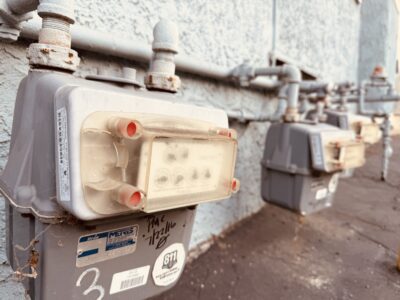Renewables and Republicans in the Rustbelt
Republican Governors in Ohio and Michigan have given support to renewables. Indiana, not so much.
When people think of the rustbelt, they think of places like Cleveland, Gary, and Detroit. Ohio, Indiana, and Michigan form a cluster of states under solid Republican control, Republicans controlling the governor’s mansion and both houses of the legislature. All three states went for Trump, with varying margins. The three states also have commonalities in terms of energy. Historically, they have all relied heavily on coal. Yet, according to the National Renewable Energy Laboratory (NREL), all three states have considerable potential for wind and solar (with Ohio particularly strong in solar), although not as much as nearby Illinois.
Despite being slow about developing this potential, they haven’t abandoned the effort altogether. In Ohio and Michigan, Republican governors have unexpectedly played recent roles in protecting and even expanding use of renewables. Indiana lags the other two states, but even there, the Republicans have not adopted the Koch brothers demand to eliminate all support for renewables.
Ohio. Kasich’s support for renewable energy may seem least surprising, since he is as close as the Republican Party comes to having a moderate these days, with the possible exception of Senator Susan Collins. Kasich issued a strong statement condemning Trump’s withdrawal from the Paris agreement. He admitted to having some problems with the treaty as currently drafted. “But,” he continued, “I know that climate change is real. It is a global issue and will need a global agreement to address. And we could have negotiated that agreement in ways that would not needlessly destroy jobs.” He added:
“A properly negotiated agreement could actually have ended up driving innovation and creating jobs. By withdrawing from the agreement, the Administration has passed up an opportunity both to expand U.S leadership in clean energy technology and to create well-paid American jobs with a future.”
Ohio’s grid is heavily dependent on fossil fuels, according to the EIA, with almost 60% coming from coal, 24% from natural gas, and 14% from nuclear. If you do the math, that leaves about 2% for renewables. Ohio has a weak renewable portfolio standard. Utilities are required to obtain a percentage of their energy from renewable sources, with amounts rising steadily from less than 1% when the law was passed to 12.5% in 2026. Apparently, these percentages were still too high to suit the Ohio legislature, which passed a bill to freeze the standards.
Kasich vetoed the law. Kasich “credited Ohio’s “wide range of energy generation options” with helping to grow jobs in the state over the past six years.” The bill risked “undermining this progress by taking away some of those energy generation options, particularly the very options most prized by the companies poised to create many jobs in Ohio in the coming years, such as high technology firms.”
Michigan. Rick Snyder, the governor of Michigan, has been more evasive regarding his views on climate change. But in February, 2016, he joined a group of 16 other governors (including Jerry Brown) to endorse renewable energy, energy efficiency, vehicle options such as biofuels and electric cars, and grid improvements. Michigan’s reliance on coal has dropped quickly. According to the EIA, coal provided half of the state’s electricity in 2014, but by 2016 coal’s share was done to about a third.
At the end of 2016, he brokered a deal to raise Michigan’s renewable portfolio standard from 10% to !5%. (The 10% mandate was established by Gov. Jennifer Granholm, who now teaches at Berkeley’s public policy school.) Snyder applauded the plan as “a statewide energy policy that will save Michigan residents millions of dollars on their electricity bills, alleviate concerns about having enough capacity to power the daily activities of 10 million and find new ways to use our existing energy grid more effectively.”
Indiana. Coal accounts for about three-quarters of Indiana’s power generation, with about two-thirds of the remainder coming from natural gas and one-third from renewables. The state has a 10% renewable portfolio standard. Indiana gets about 1900 MW from large-scale wind farms. It also gets 4.5 MW from small-scale wind, which receives some preferential state tax treatment. Solar gets similar tax treatment. In addition, five of the state’s utilities offer net metering. 143 MW of solar are connected to the grid. In 2015, about 870 Indiana customers used net metering.
In May, Governor Holcombe signed Senate Bill 309, which phases down support for solar. According to the Journal Gazette:
“Under the final version, anyone who installs solar panels or wind turbines by the end of this year will get the higher retail rate for their excess energy for 30 years. This grandfathering is meant to allow people to recoup the investment cost of the equipment.”
“Those who install solar or wind devices in the next five years will get the full retail rate for up to 15 years, but the longer people wait, the fewer number of years they will have at that rate. After 2022, anyone who installs the technology will receive a lower wholesale rate plus a premium of 25 percent.”
Why is Indiana so much less receptive to renewables than Ohio and Indiana? No doubt there are ore complicated explanations, but raw politics must have something to do with it. Trump won close victories in Michigan and Ohio with margins below 2%, but he carried Indiana by nearly 20%. Thus, the Republican grasp on Indiana is stronger, and there is correspondingly less need for conservatives to compromise with Democrats or moderate Republicans.
Because they make so much use of coal, these states are high carbon-emitters. As the experiences in Ohio and Michigan show, even among Republicans in these states there is some support for renewables. But clearly, any real transformation of the energy systems in the three states is going to take either a political reversal of fortunes or else federal intervention.
Reader Comments
2 Replies to “Renewables and Republicans in the Rustbelt”
Comments are closed.







Dear Dan,
Solar and wind generation are very inefficient technologies for generating electricity, especially when compared to clean burning low cost natural gas and modern high-efficiency combined cycle co-generation power plants which produce low cost electricity and do not require government subsidies like wind and solar.
By now almost all of us who are knowledgeable and well-versed on climate issues, are well-aware and fully cognizant of the fact that solar and wind energy projects have no measurable effect on climate and do not mitigate climate change. No one can prove otherwise. The great deception has run its course. Now it is time to accept reality, get on board and start moving in the right direction.
Dear BQRQ
Lets address your concerns in segments: 1) “Solar and wind generation are very inefficient technologies for generating electricity…”
Power plants, whether fueled by coal, natural gas, petroleum or nuclear, burn energy-dense matter to release heat, which generates electricity. The thermodynamic limits of this process means only two-thirds of the energy in the raw materials actually make it onto the grid in the form of electricity. However, because we are also concerned with efficiencies, we need to take transmission losses and distribution losses into account. The loss of electricity from point of generation (POG) to point of use (POU) is about 40%. Now with renewables, this varies depending on the source’s distance from POG…which is why many people advocate for solar in metropolitan settings, as the POG is the POU.
2) “…when compared to clean burning low cost natural gas and modern high-efficiency combined cycle co-generation power plants which produce low cost electricity and do not require government subsidies like wind and solar.”
If we are going to address government subsidies, should we consider the federal budgets that are necessary to secure the energy-dense matter (i.e. oil, natural gas, uranium) to generate the electricity? Should we also then monetize the political blowback and security costs to the state? Renewables don’t have the same risk that fuel-based energy generation does. Moreover, we are not fit to address the environmental or financial externalities of our conventional energy generating endeavors, like nuclear. Living within direct proximity to Yucca Mountain Nuclear Repository, we still do not have a functioning nuclear waste repository, even though it was approved in 2002. Over the years, Yucca Mountain has run out of funding and finally flat lined in 2011. Currently, for the 2018 fiscal year DOE has requested $120 million and the NRC $30 million to continue activities…these are the “low cost” solutions that you were mentioning?